My latest project is restoring a Fleischmann FMZ loco and restoring a Twin decoder. (see my other post on capacitor value)
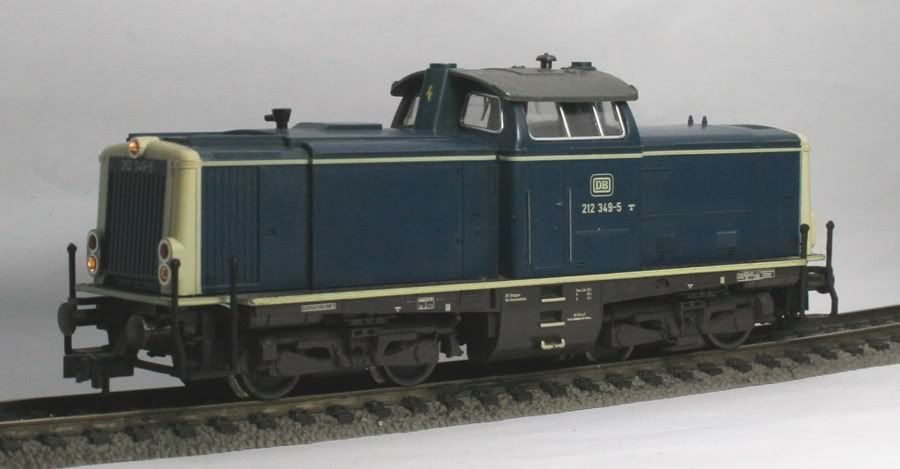
Fleischmann produced this locomotive as a FMZ Digital controlled locomotive in 1988 (production finished in 1998) , improvements including blackened wheels , pickup on all eight wheels and a slightly more refined motor than the previous DC Analog 4231 (produced 1977 – 1995). Installing a Fleischmann Twin Decoder (#6846 or #6847) will enable this locomotive to run on FMZ, DCC and DC Analog. For the collector, the locomotive will still be a FMZ Locomotive, but have the added advantage of being able to be used DCC Digitally and DC Analog as well.
The Fleischmann BR212 locomotives are easy to disassemble; one screw is all that holds the body to the chassis.
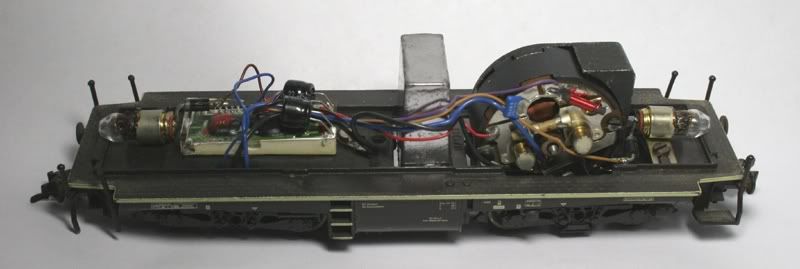
Above- the FMZ decoder in place as the locomotive was originally. The wiring is similar to the DCC wiring but the colours are incorrect for DCC NMRA standards, also note that the lighting is powered through the chassis from the left hand rail pickups.
The FMZ decoder is glued onto the removable plate covering the un-powered bogie, as I had a spare plate, I kept the decoder as is and carefully removed the wiring from the lights and motor.
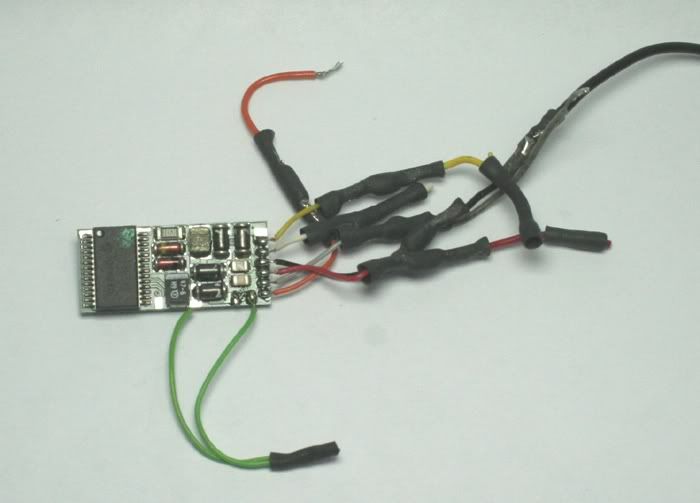
Above- I had a Fleischmann twin decoder from another locomotive, this was either a 6846 or 6847 a 6 wire decoder, the wiring was a bit of a mess, having been used in at least 3 different locomotives before this one.
This is a nice compact decoder and could easily be used as a NEM651 direct plug in decoder if pins were soldered to the decoder connections instead of wires.
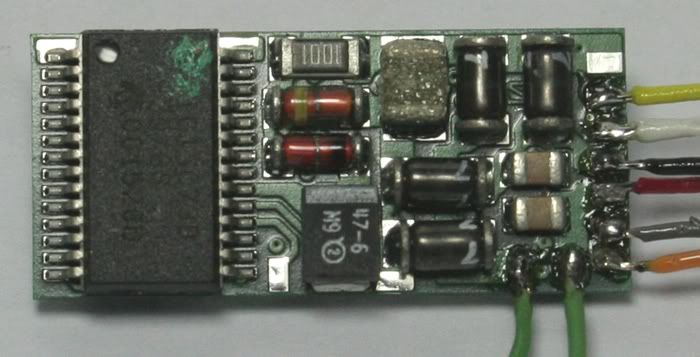
Firstly- I rewired the decoder with new wiring.
Then I wired the decoder to the locomotive to make sure that it was operational.
The spare pad at the top of the decoder is for the blue wire of the NEM652 decoder #6448.
Testing the locomotive with the decoder in the circuit, showed that the decoder was functioning properly (by-passing the locomotives pickups) there were some issues with the locomotives pickups and wheels – all needed a thorough cleaning. The previous owner had used some sort of contact “enhancer” that left a green residue, this was difficult to remove as it had set rock hard and did not appear to be conductive!
Initially I tested the decoder with the blue wire in place and some LEDs wired through a 1k Ohm resistor – but could not get the lights to work with F0. Having a read of the decoder literature , I discovered that by default the Twin decoder has been set to 14/27 Speed Steps – as my system is set for 28/128 Steps there can be issues with lighting behaving irregularly (or in this case – not at all). I found this out AFTER I un-soldered the Blue wire and put the original lighting back, powered through the chassis.
The lighting would not work wired this way either.
Putting the loco on the Programming track I found out that CV29 was set to 16. I was still none the wiser as the instructions were of a different format. Most of the CVs are not editable (or no information is given to edit) Decoder pro does not have any definitions for the Fleischmann decoders.
Lenz Li-USB CV Editor will allow the decoder to be edited and I have changed the CV29 from the default value of 16 to 18 to give 28 or 128 speed steps, as the default is for 14/27 and the lights will not work. It took a few goes to change this
The descriptions in the paper work are Bit0=0, Bit1=0, Bit5=0 -no mention of the speed table being loaded (Bit5=1)
CV5 is not used and the speed table is used by default. The Lenz CV editor shows how it works otherwise I would have been in the dark. But now the lighting worked OK powered through the chassis.
For DC and DCC operation CV29 =22 (including 28/128 Speed Steps)
The Info sheet was nothing about lighting functions and these are probably not programmable. But after putting the Blue wire on again I had lighting wired to NMRA specifications and I need to shorten a few wires to tidy things up.
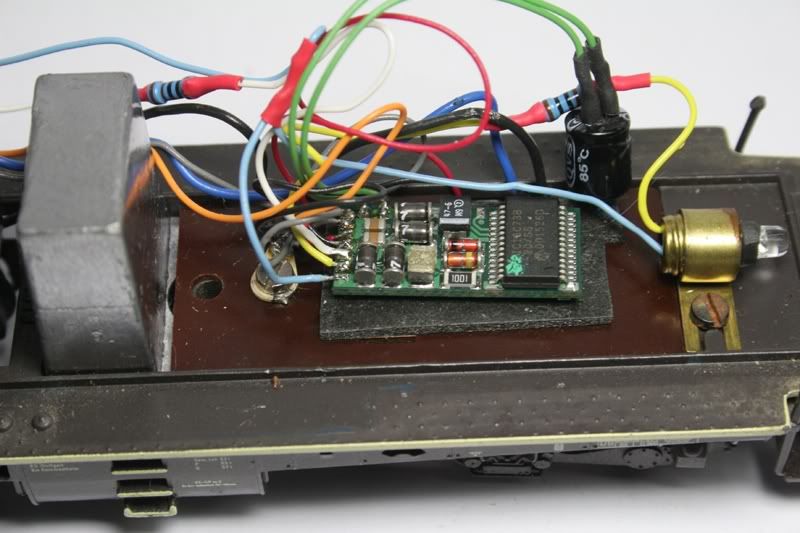
Above – The blue wire soldered to the decoder and the LED positioned in the original lamp holder, the project a success. The wiring still needs tidying up and the chassis tag for the black wire needs to be removed.
Having said all that, the decoder runs the ex-FMZ loco extremely smoothly and quietly.
The decoder has all sorts of overload / short protection - indicated by flashing the lights on the loco. Continual flashing indicates a short circuit, Double flashes indicates overheating. I have not managed to do this-yet.
Thank You!
ReplyDeleteWould you know what values are needed in CV17 & 18 to assign a four digit address to a Fleischmann twin decoder. I have changed CV29 from 18 (128 speed steps-thanks for this) to 50 to account for Bit5. The address I would like to assign to the loco is 1033.Are there any other CV's that need to be changed.
ReplyDelete